 |
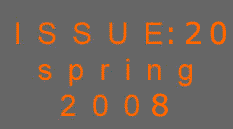 |
Issue No. 20 Spring
|
|
ENS News |
|
ENS Events |
|
Member Societies & Corporate Members |
|
Taming the Chernobyl Avalanche IAEA presents results of OSART Mission The Advanced Reactor Group (GRA) Calculation of the neutron flux, fuel and moderator temperature transients for Research Reactors |
YGN Report |
|
European Institutions |
|
ENS World News |
ENS Members |
| Links to ENS Member
Societies Links to ENS Corporate Members Editorial staff ______________________ |
| _____________________ |
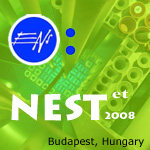 |
____________________ |
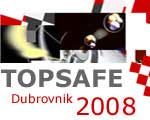 |
____________________ |
|
|
|
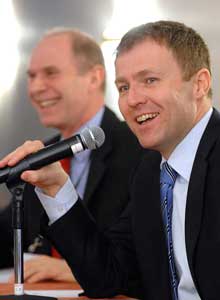 |
The conference programme revolved around three plenary sessions and six parallel workshops. After an opening address from the Conference Chairman, David Bonser, the guest speaker was Martin Roman, CEO of CEZ. He spoke about the vital importance to CEZ of effective communications, both for exploiting the large degree of public support for nuclear energy in the Czech Republic and for countering the hostile anti-nuclear stance of its Austrian neighbours - especially their unremitting campaign against the Temellin NPP. CEZ has a multi-level communications strategy, with a variety of approaches aimed, among other things, at stressing the assets and added |
value of nuclear energy and at fostering good community relations as a key to growth in the sector.
Plenary focus
The first plenary session was entitled Communicating Science and brought together two speakers with a lot of experience of with communicating scientific complexities in a simple and easy-to-understand way. The first was Dr. Brian Cox. Dr. Cox lectures in particle physics at the University of Manchester and is in charge of a major research project at the CERN laboratory in Geneva. He also regularly features in scientific programmes on British TV and radio. The second speaker was Giovanni Corrada, who lectures at the University of Sienna and acts as a consultant on science communications. They asked each other questions about how to best communicate science in a way that interacted with the conference floor and explored options based on their experiences. The public’s views on science tend to be polarised and influenced by preconceptions. Giving them more facts does not necessarily make them more or less in favour. One of the main messages of this session was that the public should be given the facts in a simple and clear way that they can relate to so that they can make a better judgement. They shouldn’t be blinded by science or turned off by complex concepts explained in complex terms. Nuclear communicators must experiment in new innovative ways of presenting the facts.
The second plenary session focused on the perception and communication of nuclear risk and centred on a fascinating presentation by an American communications consultant, David Ropeik. He showed how the human brain perceives and responds to danger with a mixture of reason, emotion, intellect and instinct. He summarised how our fears often do not match the facts and how it is important for risk managers to take account of the risk perception process in when making decisions.
Interactive workshops
True to PIME tradition, there then followed a session on the host country, in which CEZ outlined the current political and economic situation in the Czech Republic and on its intentions to carry out a new build feasibility study in spite of the current moratorium on new build introduced by the Czech government.
Delegates then broke out into one of the three
parallel workshops on the programme for Day 1. These workshops,
in which the emphasis
was very much on interactive group discussions and delivering
an end product, were devoted to the themes of Internal
Communications, New Tools and Where Others Have Succeeded and
We Have Failed.
Each workshop featured a series of short statements from a range
of experts representing industry, international organisations
and communications consultancies (for a complete list of speakers
and moderators click on the following link to the PIME 2008 Programme:
www.pime2008.org/programme.htm.
A maximum amount of time was set aside for discussion with conclusions
and recommendations as the end product (these
were later presented in plenary on Day 2).
The focus of discussion for the workshop on Internal Communications was how empowering employees with information thanks to effective internal communications campaigns instils in them a stronger sense of belonging and identifying with their organisation. This then enables them to talk with pride and conviction about their organisation to outside audiences. In short, good internal communications can help an organisation achieve both internal and external communications objectives.
The Young Generation Network moderated the workshop on New Tools. During this workshop the emphasis was on exploiting the communications reach and benefits of the plethora of communications channels and tools available to today’s communicators. The main focus was using new communications tools like blogging, podcasting, Facebook, Second Life and You Tube to engage stakeholders in the nuclear debate - and especially the younger ones. With 54% of all the opinions on nuclear expressed in blogs negative towards nuclear, 25% neutral and 21% positive, there is clearly still a long way to go to change things around. But new tools can help change people’s perceptions by involving them more actively in the debate.
The third workshop, entitled Where Others Have Succeeded and We have Failed, vas dedicated to looking at the communications experiences of other industries. The aim was to find out where nuclear communicators can pick up some tips from the successes of communicators from other industries and apply them to their own situation. The European Wind Energy Association (EWEA) and Czech Railways gave presentations outlining how their recent communications campaigns have helped to debunk common myths, improve corporate image, increase public acceptability or reverse the negative impacts of an unforeseen crisis (the Czech Railways case study was handling the breakdown of the pendolino high speed train and managing the negative relational impact).
Day 2On Day 2, the debating spotlight fell on the global revival of nuclear energy. Three keynote speakers outlined the latest global developments in the nuclear field. Janice Dunn Lee, Deputy Director General of OECD/NEA, stressed the importance of transparency when communicating about nuclear energy and outlined the consolidated research effort going on worldwide - most notably that of the Generation IV International Framework, GIF. She also spoke about multi-lateral approaches and the vital need for having common international regulatory practices for the safe operation of reactors. |
 |
Ute Blohm-Hieber, Head of the Nuclear Energy Unit at DG TREN (European Commission) gave a detailed overview of recent political developments at EU level that have underpinned the nuclear revival in the Community. She spoke above all about the work of the High Level Group on Waste and Safety (HLG), the Sustainable Nuclear Energy Technology Platform (SNETP) and the European Nuclear Energy Forum (ENEF). Among the many policy priorities she outlined were the importance of nuclear energy in the energy mix to ensure secure supplies of energy, integrating energy and environmental policies, sustainability and the low-carbon economy and the European Commission’s priority new framework for nuclear safety, waste and decommissioning.
Finally, Ian Facer of the IAEA gave a lively talk about the recent history of nuclear, its current status globally and the role of the IAEA in providing, among other things, member states with guidance and training and in identifying common objectives and standards. He spoke about the truly global reach of nuclear, emphasising that of the world’s 6.6 billion inhabitants today, 4.05 billion live in countries that have nuclear power and 1.40 billion live in countries where 80% of the population are interested in having nuclear. This means that only 0.026 of the world’s total population live in countries that are quite simply non-nuclear or anti-nuclear.
The three workshops on Day 2 were devoted to discussing the following key issues: Education and Training, Risk Communication and Public Consultation and Stakeholder Involvement.
The workshop on Education and Training included a wide-ranging debate about the shortage of young talented people in many European countries choosing a career in nuclear research or engineering and focused on the need for trans-European dialogue, improved communications to “sell” nuclear and co-operation to reverse current trends. Among the cases studied were: education and training programmes offered by universities in the Czech Republic with the support of industry (CEZ) and the research community (REZ); education, training and international co-operative research projects run by Belgium’s national research centre (SCK-CEN); activities organised by the CEA, in France, to sensitise ad younger students to the benefits of a career in industry or research - especially targeting school children; education and training courses offered by the Josef Stefan Institute, the University of Ljubljana and the Krsko NPP, in Slovenia and last, but not least, the educational and training opportunities offered by the specialised National Skills Academy for Nuclear, in the UK.
The workshop on Risk Communications included contributions from a specialised risk communications consultant (David Ropeik, who spoke on Day 1), the World Nuclear Transport Institute (WNTI) and the Nuclear Safety Institute of the Russian Academy of Sciences. The main issue discussed by participants was how to understand the risk perception process better and incorporate it into organisations’ communications output.
The final workshop at PIME 2008 focused on the ubiquitous issue of Public Consultation and Stakeholder Involvement. Contributors to this session included the President of Women in Nuclear (WIN) Global, the Communications Officer of the Nuclear Industry Association, in the UK, and the Head of Public Relations at the Slovenian Agency for Radioactive Waste – ARAO. The presentations launched an interactive debate on how communications can help to reverse the general anti-nuclear stance of one particular stakeholder group - women - and how better communications can convince women that nuclear energy is ultimately in everyone’s interest.
The final plenary session on Day 2 was devoted to the issue of crisis communications, a perennial PIME topic and a constant preoccupation for nuclear communicators. The two keynote speakers in the session were Ivo Banek, Media Officer of Vatenfall Europe’s Nuclear Energy Division, and Shinichi Furutsuka, Manager of the Nuclear Policy and Research Group of the Tokyo Electric Power Company, in Japan.
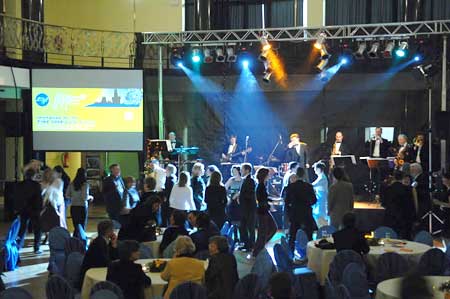
Ivo Banek began by talking about the much publicised problems that it encountered when a fire broke out at the Brunsbüttel and Krümmel NPPs, in Germany. He spoke very candidly about the crisis management errors that were committed at Vatenfall in Germany – errors that led to the eventual resignation of several senior managers. He underlined how the company had underestimated the power of TV pictures and how they can convey dramatic and out-of-context images to the public. They were far too reactive and hesitant in their response, rather than proactively communicating in a timely and clear way. Ivo Banek focused on how Vatenfall had to re-establish the credibility of the organisation following the crises and restore the public’s trust in nuclear energy. It was a salutary tale for all nuclear communicators to take heed of – the right communications guidelines and strategy have to be in place before any crisis occurs, so that public confidence in the organisation and its future communications can be safeguarded.
Mr. Furutsuka outlined how the Tokyo Electric Power Company collaborated with Japan’s government-led Nuclear and Industrial Safety Agency (NISA) and handled its communications strategy in the aftermath of the Chuetsu-oki earthquake that hit Japan and caused a minor fire at their Kashiwazaki Kariwa NPPs. He outlined the main elements in the communications strategy, including information campaigns aimed at local community, handling regional and national media and working closely with the Japanese government. The main lessons to be learned by both the utility and the Japanese government are: that there must be a co-ordinated strategy and team in place and ready to spring into action as soon as possible, that lessons must be learned by all parties and incorporated into crisis management practices, that crisis management training should be provided and that when a crisis occurs clean and unambiguous information must be sent out to key audiences promptly. This helps reassure the public and maintain respect for the organisation.
After the final plenary session the chairpersons from the 6 workshops gave participants their feedback on what had happened during their respective breakouts. The main issues discussed, the opinions expressed and the conclusions drawn were summarised briefly.
The closing session of PIME 2008 consisted of two main items. Firstly, John McNamara of the Nuclear Industry Association in the UK gave a presentation of how the decision to re-launch a new build programme in the UK, following a nationwide stakeholder consultation process, has been communicated by the British nuclear industry. The NIA’s strategy for success is based upon six key elements: developing and maintaining good media relations, engaging the public through targeted information campaigns, using only trusted information sources, having a rebuttal service in place, carrying out an effective public affairs programme and maintaining high visibility. As far as public opinion is concerned, 65% of the British public now support nuclear energy as part of a balanced energy mix. However, 72% of MPs in the UK support the replacement of nuclear and there is still substantial opposition to the dawning of a new nuclear age in the UK. The communications campaign goes on….
Finally, Bernard Jolly, who is a member of SFEN and a Member of the Board of ENS, brought PIME 2008 to an end by announcing the winner of the 2008 PIME Award for Communications Excellence. The winner, who was elected by PIME participants, was COVRA, in the Netherlands, for the innovative way it has used art as a vehicle for connecting with its local and regional community and highlighting the state-of-the-art technology used at its radioactive waste storage facilities.

Before the PIME 2008 participants headed home after two days of lively debate and serious networking it was announced that PIME 2009 would take place in February, in Edinburgh.
Copies of all the presentations given during
PIME, including some of the workshop feedback summaries are available
to participants via the PIME 2008 section of the ENS website
at:
www.pime2008.org/presentations.htm.
| |

